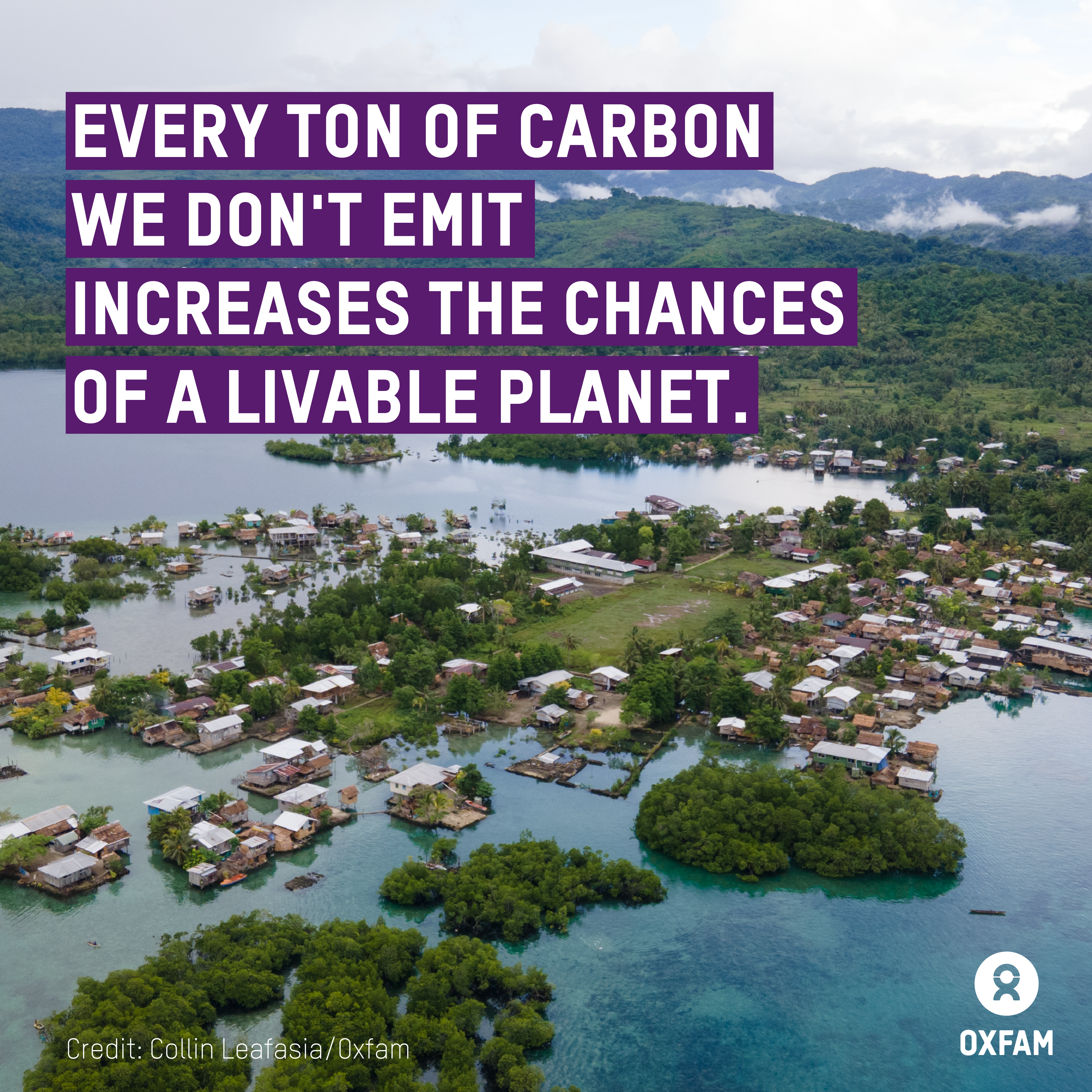Responding to the publication of the IPCC’s Working Group II report assessing climate change impacts, adaptation and vulnerability, Head of Oxfam Scotland, Jamie Livingstone, said:
“The catalogue of pain, loss and suffering highlighted in this report must be a wake-up call to everyone. It’s clear that the poorest – those who have done the least to contribute to climate change – are suffering the most: climate change is already claiming lives, making people poorer and reversing development gains. Every fraction of a degree of heating matters and brings extra risks to lives and livelihoods.
“There are three parts to the solution: making every effort to limit heating to 1.5 degrees, massively increasing adaptation efforts, and urgently getting finance to those recovering from climate impacts.
“Right now, the world’s richest are squandering any prospect we have of limiting global temperatures to 1.5°C. Since COP26, the richest one percent of the world’s population have emitted far more carbon than the population of Africa does in an entire year.”
Commenting on the implications for climate action by the Scottish and UK Governments, Jamie Livingstone added:
“All nations must do more, including Scotland. At COP26, the Scottish Government led the world by committing specific funds to help poor communities around the world who are already facing the irreversible impacts of climate change. But while Scotland’s emissions continue to fall, we have missed the last three annual emissions reductions targets in a row.
“Unless Scotland achieves more rapid emission cuts, the Scottish Government’s international leadership will be completely undermined: it’d be like throwing a brick through someone’s window and then offering to replace the glass. This IPCC report again highlights the life and death necessity of faster action.
“As the ongoing president of COP26, the UK Government must also ensure that the goal to double adaptation finance agreed during the talks is realised so that vulnerable countries can adapt to the changes they are facing. It must also become a champion of finance to address irreversible loss and damage”.
Notes to Editors
Only a quarter of all climate finance to vulnerable countries is for adaptation. The recent agreement at COP26 to double adaptation finance to $40 billion by 2025 will help, but it’s nowhere near enough. The UN estimates that developing countries need $70 billion every year to adapt, and those costs are not falling.
According to the Organization for Economic Cooperation and Development (OECD), developed countries provided only around $80 billion in climate finance in 2019. While the UN Secretary-General, Oxfam and others have called for half the money to be spent on adaptation, only about a quarter of total climate finance goes to adaptation. The UN Environment Program (UNEP) estimates that annual adaptation costs in developing countries are expected to reach $140 to $300 billion in 2030 and $280 to $500 billion in 2050.
During COP26 the Scottish Government committed to trebling the value of the Climate Justice Fund – which supports adaptation internationally – to £36 million during this Parliament, including £2 million to address loss and damage.
Photos of Somalia’s Jubaland drought are available for download.
The UNFCCC estimates Somalia could need $48.5 billion to adapt to climate change between now and 2030. Somalia’s GDP is less than $5 billion.
Since COP26, the world’s richest 1 percent (79 million people) have emitted an estimated 1.7 billion tons in carbon emissions. This is more than the continent of Africa emits in an entire year, home to almost 1.4 billion people. According to the Global Carbon Project, Africa’s consumption emissions for 2019 (latest year available) were 1.03 billion tons (1.03 billion tons divided by 365 x 107 = 294 million tons emitted by Africa in 107 days). Calculations were made using Oxfam and the Stockholm Environment Institute’s Confronting Carbon Inequality report.
Recent data from Oxfam shows that the wealthiest 1 percent of humanity are responsible for twice as many emissions as the poorest 50 percent, and that by 2030, their carbon footprints are in fact set to be 30 times greater than the level compatible with the 1.5°C goal of the Paris Agreement.
